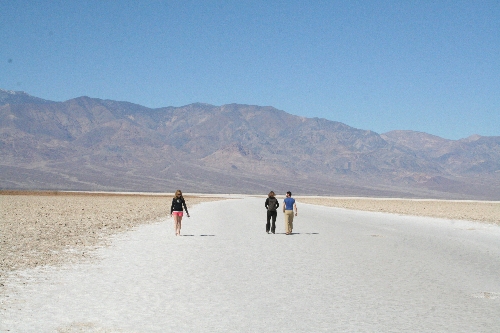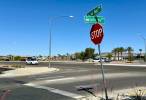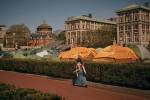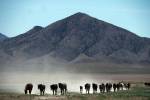Visit Death Valley before the weather turns deadly

In the waning weeks of winter, if you live in Southern Nevada, you owe yourself a trip to Death Valley National Park, just over the mountains in California. Warm weather arrives at the park earlier than in the Las Vegas Valley and is often ideal. Average daily highs in March run about 80 degrees, and by April, they hit 90 degrees in the lower elevation areas.
Although spending a couple of days in the park is best, it is close enough to Las Vegas — less than a 2½-hour drive — that even a day trip is beneficial. The park’s most popular attractions are in the part nearest Nevada, around Furnace Creek, at the hub.
All visits to the park should begin at the newly remodeled visitor center, which reopened last month after more than a year. It’s just a quarter-mile north of Furnace Creek Ranch. Pick up a map of the park, talk to a park ranger and grab some more detailed brochures on what interests you, and you are on your way.
In some years, this is the time to see incredible wildflower displays in the low-lying areas. Unfortunately, this winter didn’t bring much rain, so most of the wildflower seeds didn’t sprout, and the bloom is expected to be limited. Your best bet would be to look for some flowering shrubs in washes or canyons, where limited moisture tends to collect.
Instead of grieving over the lack of bloom, this might be the year to concentrate on the park’s incredible geology, landscapes and perhaps some of the rich history of the area. For first-time visitors on a day trip, I would recommend leaving the visitor center and heading south along Badwater Road (Highway 190) for about 17 miles. This takes you to the Badwater Salt Flat, one of the most sought-out places. From there, you can work your way back north to Furnace Creek, stopping at a few choice spots on your right.
Badwater Salt Flat is a level playa that, at 282 feet below sea level, is the lowest place in North America. You can walk the entire 5 miles across the salt basin, barring a recent heavy rain, or as far as you feel comfortable. It has a very smooth surface, and even wheelchairs can travel quite a way thanks to ramped access from the parking area.
Back in your vehicle, drive north about 3.4 miles and go right for the access road to the signed Natural Bridge Trailhead. From there, it is a 1-mile roundtrip and 200 feet in elevation gain to a natural bridge within a canyon. After seeing this natural wonder, travel north again along Badwater Road where your next activity might be the scenic Artists Drive, a paved 9.6-mile one-way drive through one of the most colorful areas of the park.
If you have the energy, there is one more stop about 2.8 miles north on Badwater Drive to Golden Canyon. There is a 2-mile roundtrip hike, with an elevation gain of 300 feet up the Golden Canyon Interpretive Trail.
A good place to finish your day before heading back to Las Vegas is at the Furnace Creek Ranch. The ranch offers lodging, a cafe, steakhouse and a general store. It is also home to the Borax Museum, where you will find excellent mineral displays and historic artifacts from the area’s mining days. Directly behind the museum are outdoor displays of mining and transportation equipment.
On your way back to Las Vegas, if you are taking the route through Pahrump, stop at Death Valley Junction, best known as the home of the Amargosa Opera House and Hotel. It has a simple cafe that serves good food and has guest rooms. The folks there don’t mind if you look around the motel along as you don’t disturb any guests. Marta Beckett, the main performer at the opera house and artist of the murals throughout the complex, has retired after 45 years. You will find her great artwork and evocative historic photographs throughout the hotel and, rumor has it, perhaps a ghost or two. For more information on the opera house, visit amargosa-opera-house.com.
Deborah Wall is the author of "Great Hikes, A Cerca Country Guide" and "Base Camp Las Vegas: Hiking the Southwestern States," published by Stephens Press. She can be reached at deborabus@aol.com.


















